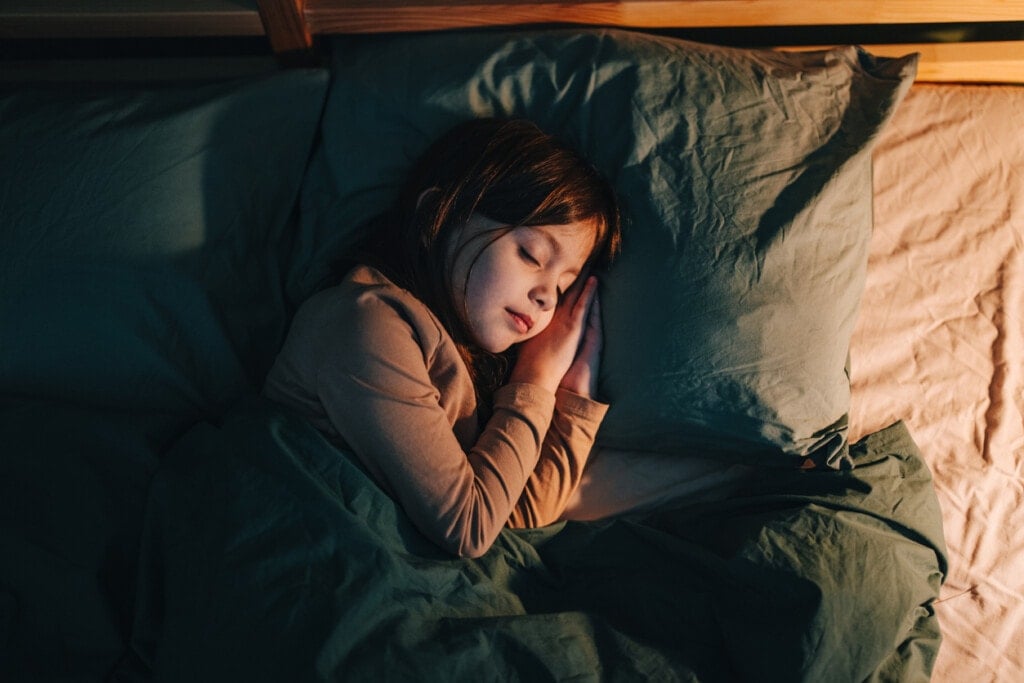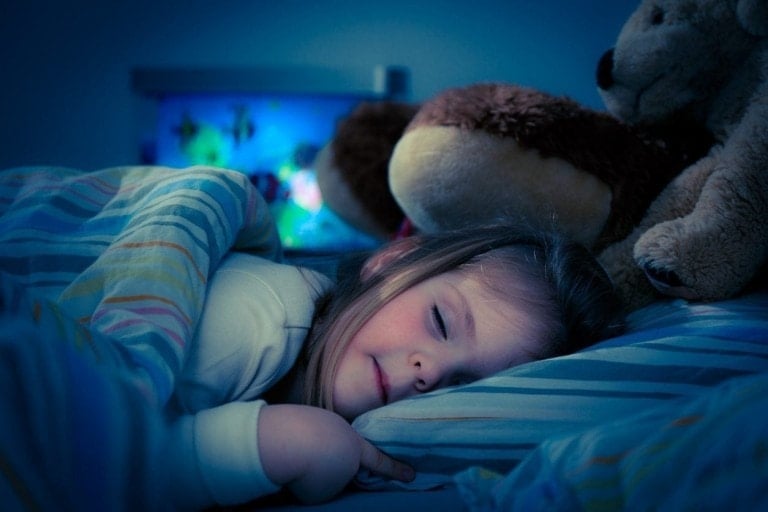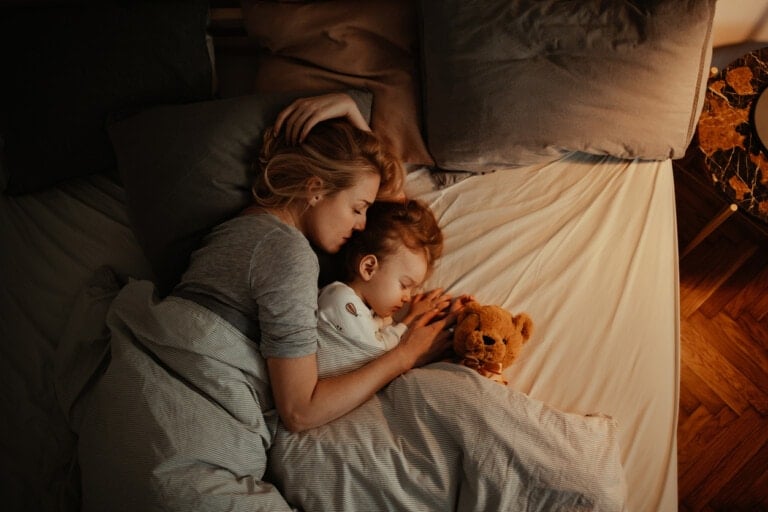Sleep is essential for our overall health and well-being. Parents know all too well the value of a good night’s rest. However, achieving quality sleep can be challenging, especially when constantly bombarded with noises that disrupt us. Fortunately, different noises can help drown out the disturbances and create a serene sleep environment. These noises, often called color noises, include white noise, brown noise, pink noise, blue noise, and green noise. Let’s explore the benefits of each and how you can use them to get more restful sleep.
What Do Color Noises Like White Noise Do?
According to licensed clinical health psychologist Dr. Shantha Gowda, “All color noises can help with achieving more quality sleep because they mask other sounds in the environment. When listening to any of these sounds while sleeping, you are less likely to hear unwanted sounds, such as housemates. Or family members making noise, birds chirping, cars honking, construction, partner snoring, etc.”
By blocking out these disturbances, color noises create a tranquil backdrop that promotes uninterrupted sleep, Gowda says. Think of color noises as sounds that help you relax and sleep better. Scientifically, these noises are a part of the broader concept of “colored noise.” Acoustics uses the term to describe sounds with specific spectral characteristics. These noises have distinct patterns of frequency distribution that can be utilized to create a soothing, sleep-inducing environment.1
What is White Noise?
White noise is perhaps the most well-known and widely used color noise. It falls right in the middle of that sound spectrum. Each color noise corresponds to different frequencies. The intensity of the sound is proportional to the power of that frequency. So, white noise sits within that sweet spot in the middle, providing a balanced mix of frequencies to help you relax and sleep better. It’s a constant sound that encompasses all frequencies audible to the human ear.2
Dr. Gowda highlights that white noise mimics the sound of blood flow in the womb, making it especially comforting for infants. White noise serves as a reliable sleep aid for adults by drowning out external noises and providing a consistent auditory cue for sleep. Its gentle and soothing nature can also help people fall back asleep more quickly when they wake up at night.
What is Pink Noise?
While white noise is the go-to option for many, other color noises are gaining attention for their potential benefits. Finding the right sound for you is a matter of trying out colored noises and determining what makes you feel the best. Pink noise, for instance, has been linked to possible memory-boosting effects. Dr. Gowda notes, “There is more research conducted with white noise. However, other noises are getting more attention, especially the possible memory-boosting effects of pink noise.”
Pink noise, characterized by a deeper, fuller sound than white noise, may enhance memory consolidation during sleep. So, if you’re looking to boost your brainpower while you sleep, pink noise might be worth a try.2
What is Brown Noise?
Similarly, brown noise, with its deeper and more bass-heavy tones, can promote relaxation and deeper sleep. If your idea of peace is sleeping in a rainstorm or near a body of water, brown noise is perfect for playing as you drift off because it resembles the low rumble of thunder or the gentle roar of ocean waves. Brown noise is characterized by its power spectral density, which decreases by six decibels per octave as the frequency increases. This creates a soothing and relaxing effect on the auditory senses, like the calming sound of a steady rainfall or the rustling of leaves in a forest.2,3
Blue and Green Noise Benefits
https://www.youtube.com/watch?v=Z8UWafkbgsc
We can describe blue noise as being bright and used at lower volumes because, at high volumes, it can be harsh, according to Gowda. It can mask distracting noises, helping to improve focus and productivity during waking hours, and may benefit those who struggle with daytime sleepiness.
Lastly, we associate green noise, Gowda says, with its balanced blend of low and high frequencies, with nature and offers a harmonious soundscape that can induce relaxation and tranquility.
How To Use Color Noises To Help You Sleep
Now that we understand the benefits and differences of these color noises, how can we incorporate them into our sleep routine? Sound machines are an excellent option for creating a sleep-friendly environment. Gowda advises, “Sound machines are also a great option for people who do not adjust well to earplugs.”
When using a sound machine, it’s essential to place it several feet away from your bed or your child’s crib if you’re adding sleep sounds into your little one’s nighttime routine. The volume should not exceed 50 decibels to ensure a safe and comfortable sound level. For a bonus, consider placing the sound machine in an area of your sleep environment where disruptive sounds tend to enter, like a shared wall or a window facing a busy street. This strategic placement will maximize the noise-masking effects and help create a serene sleep sanctuary. Dr. Gowda encourages her patients to experiment with sound machines consistently for two weeks to observe any improvements in their sleep. She says, “Many of my patients are surprised by the improvements, often experiencing fewer awakenings and less total wake time at night.”
In the pursuit of quality sleep, color noises like white noise are powerful tools to combat the disruptive sounds that often plague our nights. Whether it’s the womb-like embrace of white noise or the memory-boosting potential of pink noise, these auditory aids can help you create a tranquil sleep environment. So, if you’re seeking a natural and non-invasive way to enhance your sleep, try color noises and let them work their magic. Your sound adventure may lead to the rediscovery of restful nights and refreshed wakeups. Sweet dreams, here you come.































